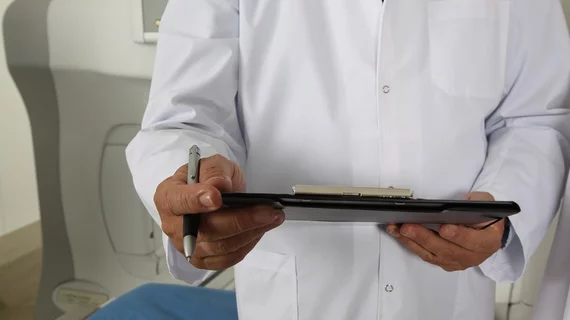Follow-up adherence affected by how and when imaging orders are placed
Delayed order entries and various scheduling factors may play a role in women either delaying or completely foregoing radiologist recommended follow-up imaging for BI-RADS 3 findings.
That’s according to new research published April 5 in the Journal of the American College of Radiology. In the new paper, experts highlight several patient- and facility-level factors that impact individuals’ likelihood of completing recommended follow-up imaging, including race, socioeconomic status, order placement timelines and ordering providers.
Experts involved in the work focused specifically on women with BI-RADS 3 image findings. While BI-RADS 3 findings are most often benign, it is recommended that women undergo routine follow-up imaging to monitor for changes that could be indicative of malignancy. However, despite these recommendations, follow-up adherence among this cohort remains moderate in many regions.
Corresponding author of the new paper Catherine S. Giess, MD, with the Department of Radiology at Brigham and Women’s Hospital in Boston, and colleagues sought to better understand why this is the case.
“Impact of social determinants of health, from various socioeconomic factors associated with neighborhoods, on health outcomes is an increasingly utilized measure in health disparity research; the premise is that socioeconomically disadvantaged neighborhoods may adversely affect the health of their residents via individual stress levels and personal safety, less support for healthy behaviors, and reduced access to education, healthy food, and timely healthcare,” the team explained.
The group analyzed these factors and more for their analysis of 3,104 unique BI-RADS 3 assessments that occurred at their facility over an eight-month period. Of these, just under 20% of patients did not complete follow-up imaging within 15 months of the time when their initial screening occurred.
The team found that women were less likely to complete additional imaging if their initial exam included the use of ultrasound or breast MRI versus mammogram alone. Patients living in the highest socioeconomically disadvantaged areas and those under the age of 40 also were less likely to undergo further testing, as were Asian women.
If orders for additional imaging were placed more than three months out from patients’ initial exam, follow-up adherence decreased. This also was the case when imaging orders were not from radiology departments or primary care physicians. These are factors that healthcare systems can and should control, the team suggested.
“Our health system has both centralized (breast imaging and central radiology scheduling) and decentralized (physician offices) pathways in which follow-up imaging may be ordered, and our results demonstrate a significant difference in timely order placement and scheduling when radiology transcribes the order and schedules the exams compared to non-radiology offices,” the group noted.
In addition to reiterating the impact of socioeconomic status on follow-up adherence, the authors suggested that their findings highlight operational variance as a hindrance. The team suggested that healthcare facilities should identify their most effective practices and deploy them across the system in order to increase follow-through rates.
The study abstract is available here.

